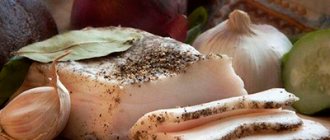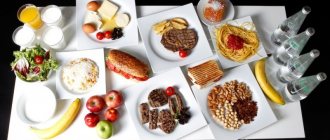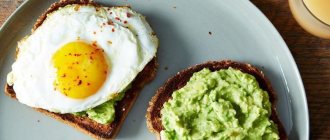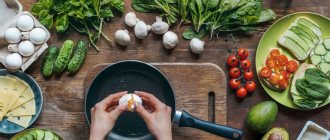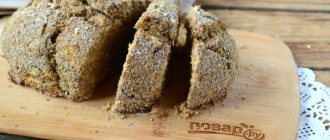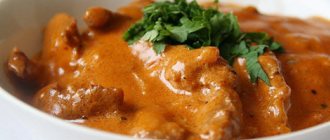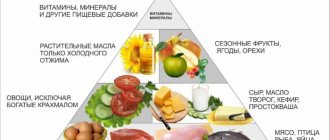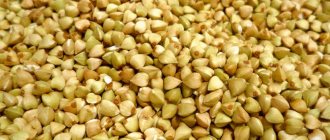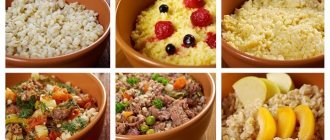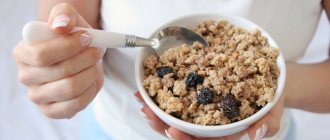The daily deadline does not allow you to have a full lunch: either there is no time for this, or you forgot to take lunch from home. During the working day, you manage to grab several mugs of coffee and countless cookies. But in the evening, you finally have the opportunity to relax and allow yourself to eat slowly, but you are so hungry that you automatically throw a couple of dishes into yourself without even realizing their taste. Is this a familiar picture?
As a result, stress, irregular nutrition, overeating after work, and a sedentary lifestyle lead to diseases such as gastrointestinal tract diseases, digestive problems, indigestion, and excess weight. How to avoid this and start eating nutritiously at work?
This is what our article is about.
Basic principles of proper nutrition
The basis of a balanced diet is the correct distribution of proteins, fats, carbohydrates in the diet and compliance with calorie standards. The ratio of nutrients and calorie content are selected individually for each person, based on their gender, age, lifestyle, metabolism and goal. On average, the distribution of BZHU is as follows:
- when losing weight, you must adhere to a diet with a calorie deficit of approximately 10-15%, where 30-35% of the daily calorie intake is protein, 30% is fat, 40% is carbohydrates.
- to gain muscle mass, the calorie surplus in the diet is 10-20% of the daily value, 30-35% of which is proteins, 25-30% fats, 45-55% carbohydrates.
A proper diet consists of 5-6 meals, where in addition to breakfast, lunch and dinner, 2-3 more snacks are included. In addition to compliance with the KBJU, it is worth paying attention to the quality of the products consumed. These should be predominantly complex carbohydrates, high-quality protein, and polyunsaturated fats of plant origin.
Rules for a healthy dinner
People who want to quickly lose weight and say goodbye to the hated kilograms very often make a big mistake - they refuse dinner. Nutritionists and gastroenterologists say with one voice: you need to have dinner! But you need to carry out the evening meal process according to the rules, approaching it with all responsibility, because indeed, it is better not to eat at all than to have dinner incorrectly. Another negative point when refusing a healthy and nutritious dinner is breakdowns that will happen sooner or later. By thoughtlessly limiting yourself to the food your body needs, you are harming your health.
So, let's note the most important points regarding the evening meal.
1. Serving size and quantity of products
An ordinary, normal portion of food for a person losing weight is as much as fits in a handful (a pair of palms folded together). By the way, this is quite a lot, as it might seem at first glance. The average men's handful holds about 350 grams, and the women's - about 250 grams. And one more important rule: make sure that there are 2 times more vegetable products and greens on your plate than protein foods.
2. Calorie content per serving
If we talk about the evening meal, then dinner should not contain more than 400 kcal, even for an ordinary person who is not overweight. For those actively losing weight, the calorie content of dinner cannot exceed 350 calories. Meals in the evening should contain an optimal balance of proteins, fats and carbohydrates and be low in calories. It is best to distribute your daily diet so that dinner contains only 20% of calories from your total daily weight.
3. Dinner time
Of course, it is quite difficult to accurately determine the time of a meal in the evening: this indicator is individual for everyone and has a direct dependence on the daily routine. But you must follow the rule: dinner should take place 3-4 hours before going to bed, no later. For example, if you go to bed around 10 pm, then it is better to have dinner from 6 to 7 pm, but if you go to bed closer to midnight, then you can have dinner at 20:00
4. Forbidden foods
A well-known proverb says that “dinner should be given to the enemy.” But this is the case if your plate literally bends under the weight of fried potatoes, a fatty pork cutlet, a salad with mayonnaise and a piece of cake for dessert. Such food certainly won’t help you get a waistline, and it will also seriously spoil your health. Therefore, it is strictly forbidden to dine on porridge (with the exception of buckwheat), fried meat, potatoes, corn flakes, any types of legumes, and you should not add salted nuts, ketchup and mayonnaise to your evening diet. Among other things, in the evening you should not eat pasta and dumplings, any bread and, of course, sweets and other similar desserts.
Why is snacking important?
Small meals help curb hunger and avoid overeating during the main meal. In addition, this way you support the functioning of the gastrointestinal tract, improve metabolism and stimulate weight loss. A snack makes it clear to the body that it is not in danger of starvation, the blood sugar level does not drop to a critical level, so you can calm down and relax.
Typically, snacks are included in the meal plan between breakfast and lunch, lunch and dinner, and before bed. But in different situations this scheme may change, for example, if you have a late lunch, then after breakfast you can allow yourself 2 snacks.
The first snack or second breakfast may include the following combinations: carbohydrates, carbohydrates and protein, carbohydrates and fats.
The second snack or snack should consist of protein, protein and fat, and also contain fiber.
For an evening snack, you need to choose protein foods with a minimum amount of fat.
The calorie content of each snack should be approximately 150-250 kcal.
Snacks before bed: is it possible or not?
In addition to your main evening meal, provided you go to bed late and have a long enough gap between dinner and bed, you can also have a small snack or even a second dinner. The following psychological point is important here: it is better to eat something healthy if you are really hungry, than to endure it, and then break loose and eat sweets or starchy foods instead of low-calorie and healthy food.
Especially for you, we have selected a list of foods that can be consumed in the evening.
If you are very hungry (even after a light dinner) and you go to bed no earlier than 22:00-23:00, two hours before bed you can eat:
- Dairy and fermented milk products with fat content up to 5%
- Eggs in any form
- Oatmeal 100-150 g (with a spoonful of honey)
- Meat, fish and seafood
- Dried fruits - figs, dates, pear
- Chicken or vegetable broth
- Orange, kiwi or apple
- Vegetables (except potatoes and corn)
- Low fat cheese
- Mushrooms
- Vegetable salads with light dressing (olive oil)
- Curd cakes, curd casseroles
As a small snack, you can also consume no more than 100 g of the following products:
- Almonds (about 20 nuts). However, it should not be fried or salted.
- Strawberries (1 cup) or raspberries (1 cup)
- Grapefruit (half)
- Tangerines (2 pcs)
If you do not follow the regime, but do not want to gain extra pounds, three hours before bedtime you can eat:
- Protein (meat, fish, wild or red rice, buckwheat as a side dish)
In the evening, everyone, without exception, who is watching their figure, needs to exclude fast carbohydrates: cereals, fruits, sweets, flour.
To make your own decision about the right evening snacks, it is very important to know the rules for digesting foods:
- Liquid and medium-thick juices 20-13 minutes;
- Fruits on average from 30 minutes to 60;
- Vegetable salads with a light dressing will take 30 to 40 minutes to cook;
- Fermented milk drinks 60 minutes;
- Porridge (oatmeal, buckwheat) up to 90 minutes;
- Potatoes - from 1.5 to 2 hours;
- The cottage cheese takes about 2 hours to digest;
- Fish - 2 hours;
- Chicken and turkey meat take 2-3 hours to digest;
- Nuts - 3 hours;
- Pork 4-5 hours.
A proper, balanced dinner will provide you with sound sleep, excellent health and excellent well-being. And you need to remember: not only the composition of the food matters, but also the mood with which you consume this food. Even the healthiest food won't do you any good if you eat it upset, constantly blaming yourself for having an extra 50 calories on your plate.
Dinner should be tasty, satisfying, healthy and with pleasure. Only in this case the dream of an ideal figure will become a reality!
Top 5 quick snacks at PP
For those who don’t have time to prepare snacks at home or simply don’t want to think about what to eat every day, we have prepared a rating of the healthiest products that are easy to find in the store:
- Nut mixture;
- Kefir or natural yogurt;
- Cottage cheese;
- Cereal/protein bar or protein cookie;
- Banana or apple or other fruit.
For those who constantly eat a balanced diet, this list may seem meager and uninteresting. Indeed, if you eat the same foods every day, then very soon you will be drawn to unhealthy sweets and fast food. To prevent this from happening, we have prepared a whole list of healthy snacks for different occasions.
Advice from experienced pp specialists
Here are a few secrets from those who have been in PP for a long time:
- if you work, then plan your snacks so that the last one is as close as possible to the end of the working day - this way you are unlikely to overeat at dinner;
- Plan each snack in advance so as not to go overboard on calories or grab something forbidden;
- add fiber to your first snack - it fills you up perfectly;
- If suddenly you find yourself far from your containers and trays, but the principles of the pp are important to you, you can almost always buy an apple, kefir, banana - that’s enough for a couple of hours.
Recipes for healthy snacks with proper nutrition
Option 1. Oatmeal with filling: curd, cheese, fruit or vegetable.
For two oatmeal pancakes you will need 2 eggs, 7 tbsp. spoons of crushed oatmeal, 7 tbsp. spoons of milk, salt to taste. Mix all ingredients until bubbles appear. Fry pancakes in a non-stick frying pan without oil or with a minimal amount of it.
As a filling you can use cheese with tomatoes and bell peppers; cottage cheese with herbs and a piece of lightly salted fish; a spoonful of nut butter and half a banana. You can come up with endless options for filling, the main thing is that they fit into the daily calorie intake. You can also fortify your oatmeal pancakes with protein by adding a few scoops of protein powder. In one of our articles we already talked about popular recipes with protein.
Option 2. Curd casserole
We offer a simple recipe for a tender casserole, which you can diversify with any additives to your taste: nuts, dried fruits, berries.
You will need 400 grams of low-fat cottage cheese, 2 eggs, PRIME SWEET calorie-free sweetener to taste, 2 tbsp. tablespoons of rice flour, several tablespoons of natural yogurt or low-fat sour cream (depending on consistency), 1 teaspoon of baking powder.
Mix all ingredients in a bowl. You should get a fairly thick mass that can be easily spread with a spoon. Bake in the oven for 20-25 minutes until done. If desired, you can add raisins, dried apricots, nuts to the casserole, or even make it salty rather than sweet.
Option 3. Chicken soufflé
This is a healthy, filling snack for those who are tired of their usual chicken dishes. The soufflé can be combined with oatmeal pancakes or made into sandwiches with whole grain bread and vegetables.
Take 400 grams of homemade minced chicken breast, 100 ml of natural yogurt, 2 eggs, salt and spices to taste. Beat the egg whites until stiff. Mix the yolks, minced meat and yogurt until smooth. Add salt and spices. Gently add the whites into the mixture and stir thoroughly. Bake in a silicone mold in the oven or in a slow cooker. You can diversify the dish with mushrooms, vegetables and herbs.
Simple recipes for a healthy dinner
Recipe 1. Chicken casserole
Ingredients:
- Chicken fillet
- Eggs - 3 pcs.
- Tomatoes
- Sour cream
Preparation:
Finely chop the chicken fillet, salt and pepper it. Beat eggs with sour cream, salt. Transfer the chicken to a baking dish and pour the resulting mixture over it. Place chopped tomatoes on top. Preheat the oven to 200 C, place the pan with the chicken and cook for 30-40 minutes. Garnish with greens or salad.
Recipe 2. Chicken salad
Ingredients:
- Boiled chicken fillet - 100 g.
- Cucumber - 1 pc.
- Quail eggs - 2 pcs.
- Lettuce leaves
- Apple - 1/2 pcs.
- Olive oil, vinegar (optional).
Preparation:
Cut the chicken fillet and cucumber into strips, eggs and apple into cubes. Mix oil and vinegar. Put all the ingredients in a salad bowl, salt and season. Mix and place on a plate with lettuce leaves.
Recipe 3. Salad with squid
Ingredients:
- Squid – 200-250 g
- Tomatoes - 1 pc.
- Cheese - 100 g
- Garlic - 1 clove
- Yogurt
Preparation:
Clean the squid and boil in salted water for 1-2 minutes. Cut the squid and tomatoes into strips. Crush the garlic and grate the cheese on a coarse grater. Mix the ingredients and season with yogurt.
Recipe 4. Curd and strawberry mousse
Ingredients:
- Low-fat cottage cheese - 150 g.
- Frozen strawberries -200 g.
Preparation:
Place the cottage cheese in a blender and pour in the previously defrosted strawberries, along with the resulting juice, so that the mass is sufficiently homogeneous. Place the resulting mousse in the refrigerator for 10-15 minutes so that it cools down and is ready. Bon appetit!
Healthy snacks for the road or on the go
If you're going on a trip, going on a long walk, or just being on your feet all day, then you can't do without quick, healthy snacks. You should choose foods that are convenient to eat even on the go and that do not spoil in the heat. Options:
- Hearty: mixed nuts, drinking natural yogurt and whole grain bread, dried lean meat in vacuum packaging.
- Sweet: seasonal fruits, berries, a handful of dried fruits, healthy protein bars.
- Not sweet: seasonal vegetables, a small portion of cheese.
Smoothie
Smoothies have become popular only in the last 5-7 years, but Americans began preparing them more than 50 years ago. In essence, this product is no different from baby food in the form of liquid puree. Smoothies are vegetables chopped in a blender for easy consumption. This option allows you to combine the most unusual products to satisfy hunger, remove toxins, and obtain vitamins. Thus, people who for some reason cannot eat solid vegetables prepare themselves healthy smoothies. The only caveat is that there are no sweeteners, yoghurts or syrups. Also, do not forget about the need for stress on the teeth - it is not advisable to completely exclude solid foods. Recipes for healthy smoothies can be found in this article.
Snack while eating healthy at work
Eating healthy at work is much easier than on the road, since you can prepare food at home and then heat it in the microwave. Examples of the right healthy snacks at work, which are suitable for both those losing weight and those gaining weight:
- Hearty: cheesecakes, protein pancakes, protein soup, a portion of cottage cheese.
- Sweet: a cup of berries or fruits, homemade oatmeal cookies.
- Not sweet: vegetable sticks, healthy sandwiches, guacamole with whole grain bread.
Is it possible to eat tasty food and lose weight?
You can prepare different dishes at home. But at work there is a temptation to chew chips while working at the computer. Don't allow yourself that luxury. Today there are many different containers on sale in which you can put healthy food prepared at home.
Why can’t you eat cookies, chips, or candy bars at work? They have almost no moisture, so they pull it out of the body, leading it to dehydration. A dehydrated body loses energy and efficiency, a person becomes lethargic and passive.
Eating only nuts between main meals is also not recommended. Bile will stagnate in the bile ducts, causing cholestasis. It is better to combine nuts with apples, tomatoes and other juicy foods.
Will coffee help you cheer up? A small cup of coffee half an hour after eating. But nutritionists do not recommend turning coffee with milk into lunch.
What to eat at work? The set is well-known: fruits, vegetables, nuts. Or you can bring food from home so that it is healthy and without harm to your figure.
Homemade snacks on healthy nutrition
If you snack at home, then you have the opportunity to diversify your menu as much as possible, because nothing prevents you from preparing a tasty and healthy dish. Here's what you can prepare for a snack if you eat right:
- Hearty: boiled eggs or omelette with vegetables, a roll of thin lavash with cottage cheese and vegetable filling, a sandwich made of whole grain bread with red fish.
- Sweet: baked apples with cinnamon and nuts, smoothie, protein shake, whole grain sandwich with peanut butter.
- Not sweet: vegetable salad, homemade grain bread with seeds, cottage cheese.
Video with tips from nutritionists
I’ll share a short video that describes the features of a pp-snack, and also gives good examples of snacks, pp-sandwich recipes, etc.:
Irina Polyanitsa My name is Irina, I am the owner and admin of the site, as well as the author of most of the recipes and articles. I love to cook simple and healthy delicacies. Certified gym instructor, personal trainer. She completed a course on nutrition and health at Stanford University, Stanford Introduction to Food and Health, as well as a course at Ludwig Maximilian University of Munich (LMU) Nutrition and Lifestyle in Pregnancy (about nutrition and lifestyle during pregnancy).
The right snack for weight loss
If you are actively losing weight, then the following types of healthy low-calorie snacks will be useful to you:
- Low-fat cottage cheese with the addition of fruits and berries. Choose foods with less sugar: green apples, pears, citrus fruits, apricots, pineapple, raspberries, strawberries, blueberries.
- Vegetable salad of non-starchy vegetables and herbs with natural yogurt dressing: tomatoes, cucumbers, bell peppers, cabbage, spinach, sorrel.
- Omelette with vegetables or boiled eggs.
- Pumpkin sorbet without sugar.
- Zucchini casserole with mushrooms.
- Low-fat dairy products: kefir, natural yogurt, fermented baked milk.
In order to satisfy your hunger and not overdo it on calories, give preference to foods high in fiber but with minimal carbohydrates. These could be celery stalks, bran bread, smoothies made from vegetables and herbs.
Snack foods containing protein - what you can eat
Animal products are considered the best sources of protein, since they are fully digestible and contain more essential amino acids, i.e. more complete. But even among plant foods there are many products that can boast a fairly high concentration of proteins. For a complete list of plant-based protein sources, follow the link.
Here are the main suppliers of amino acids for the body:
- Dairy products. In this group, hard cheeses, feta cheese and cottage cheese are the leaders, since they concentrate all the valuable substances of milk. They contain 21-25% proteins. It is very useful to use powdered milk and cream in cooking to enrich food. Fermented milk drinks contain fewer amino acids (3-5%).
- Meat products. Steamed, boiled or baked meat is suitable for the diet, not sausages or sausages. Good sources of animal proteins are dietary rabbit, poultry and veal. Don't forget about offal, especially liver, which is also rich in protein.
- Fish and seafood. Here it is better to choose fatty types in order to enrich the body with omega-3 fatty acids. In terms of protein concentration, tuna (25%), salmon and pink salmon are the leaders, but more affordable mackerel and pike perch are quite useful. Seafood is all good for you, and you shouldn’t go for expensive and exotic ones. Thus, black and capelin caviar contain the same amount of protein, 27-28%.
- Eggs. They can be cooked whole, with strict restrictions using only the protein. In addition to regular eggs (12-13% protein concentration), there is dry egg powder (46%) on sale. This is the most complete product in terms of amino acids.
- Legumes. Among plant foods, they stand out for their high protein content. Chickpeas, lentils, peas (23-24% protein) will come in handy. Due to the additional presence of slow carbohydrates, these are incredibly filling foods.
- Soy. It also belongs to the legumes, but it is worth mentioning separately due to its protein concentration of 35%. This is the most popular milk and meat substitute.
- Nuts and seeds. A storehouse of valuable compounds, including amino acids. The leaders in this group are peanuts (26%), sunflower seeds, pistachios, sesame, chia, almonds and cashews. They cannot be called low-calorie, but they also contain healthy unsaturated fats.
